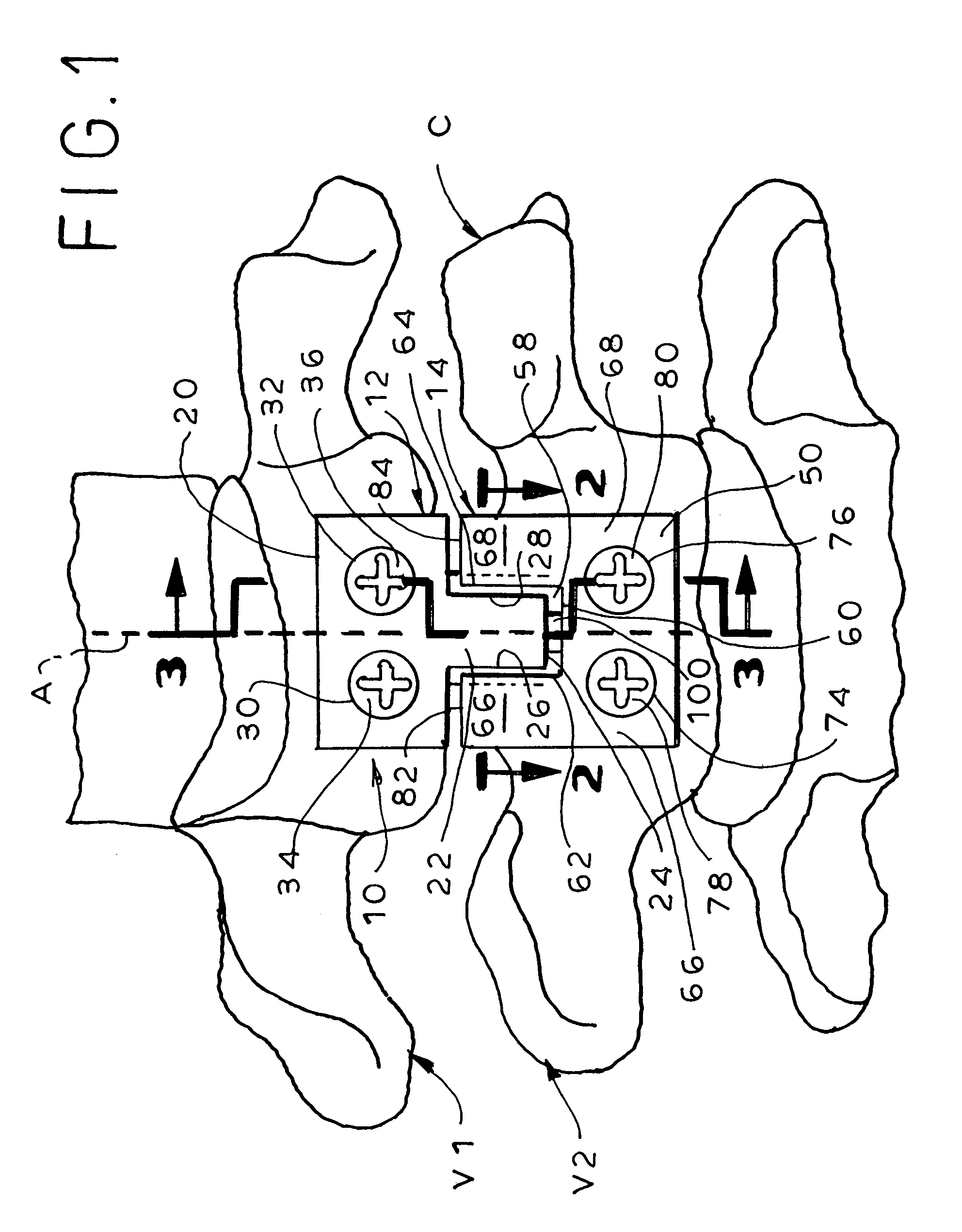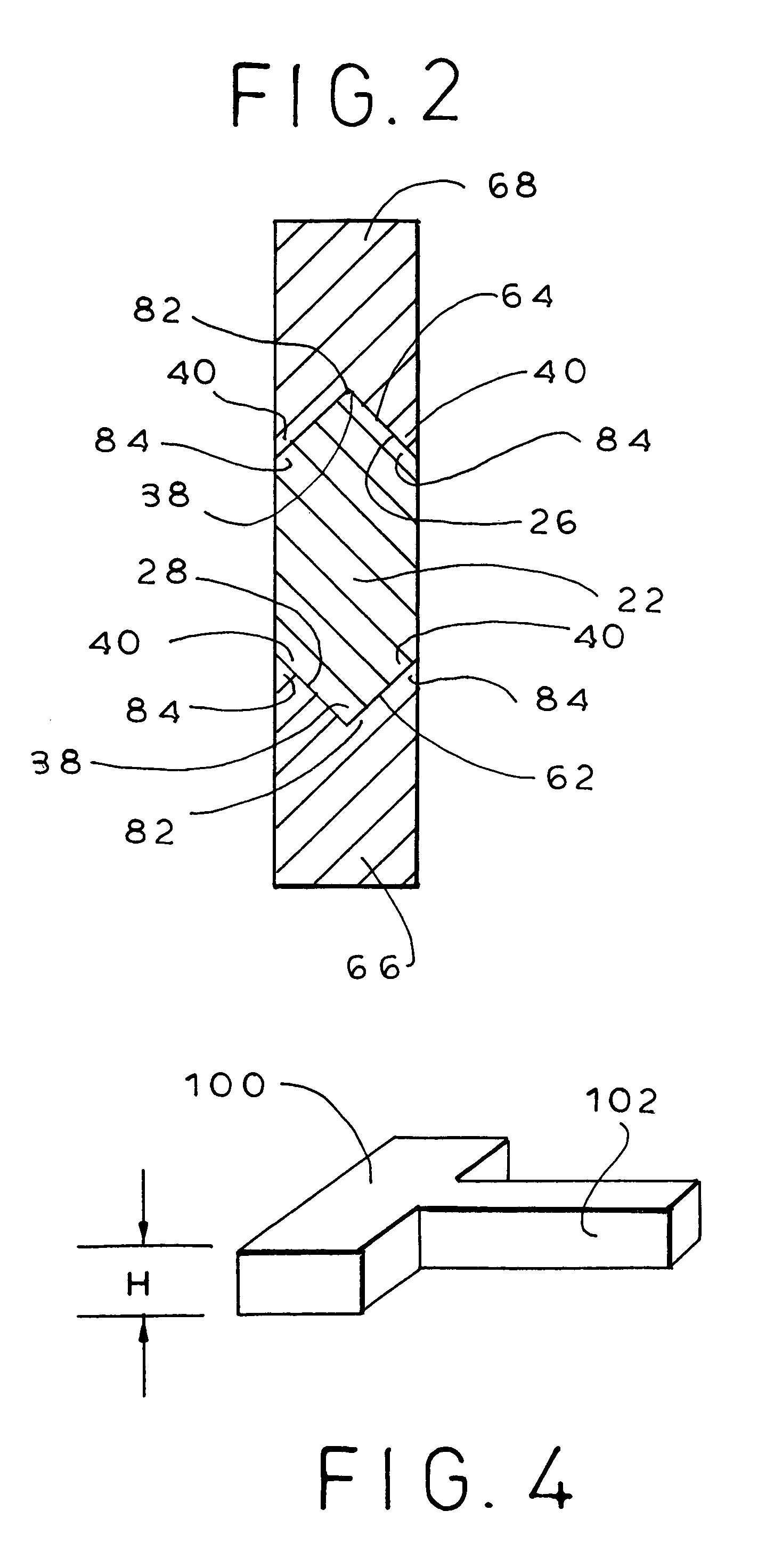Methods and apparatus for promoting fusion of vertebrae
a vertebral fusion and fusion technology, applied in the field of vertebral fusion methods and apparatuses, can solve the problems of preventing excessive subsidence, reducing the fusion rate of vertebrae, so as to promote optimal fusion at the graft, minimize stress shielding as well as excessive subsidence
- Summary
- Abstract
- Description
- Claims
- Application Information
AI Technical Summary
Benefits of technology
Problems solved by technology
Method used
Image
Examples
Embodiment Construction
[0035]The present invention provides methods and apparatuses for stabilizing vertebrae while simultaneously minimizing stress shielding and excessive subsidence. To achieve this, apparatuses are utilized that have at least two separate members, one member being attached to each of the vertebrae. The members that are adjacent to each other can be interconnected to prevent rotational and transverse displacement of the two vertebrae in relation to each other. Additionally, the apparatuses preferably include plate spacer(s) of a preselected height that is placed between each two adjacent members when the members are attached to the vertebrae, such that the members are separated by the height of the plate spacer. After attachment of the members to the vertebrae, the plate spacer(s) is / are removed. This allows for subsidence of the each two adjacent vertebrae by a distance equal to the height of the plate spacer. Thus, stress shielding as well as excessive subsidence is minimized.
[0036]In...
PUM
 Login to View More
Login to View More Abstract
Description
Claims
Application Information
 Login to View More
Login to View More - R&D
- Intellectual Property
- Life Sciences
- Materials
- Tech Scout
- Unparalleled Data Quality
- Higher Quality Content
- 60% Fewer Hallucinations
Browse by: Latest US Patents, China's latest patents, Technical Efficacy Thesaurus, Application Domain, Technology Topic, Popular Technical Reports.
© 2025 PatSnap. All rights reserved.Legal|Privacy policy|Modern Slavery Act Transparency Statement|Sitemap|About US| Contact US: help@patsnap.com



